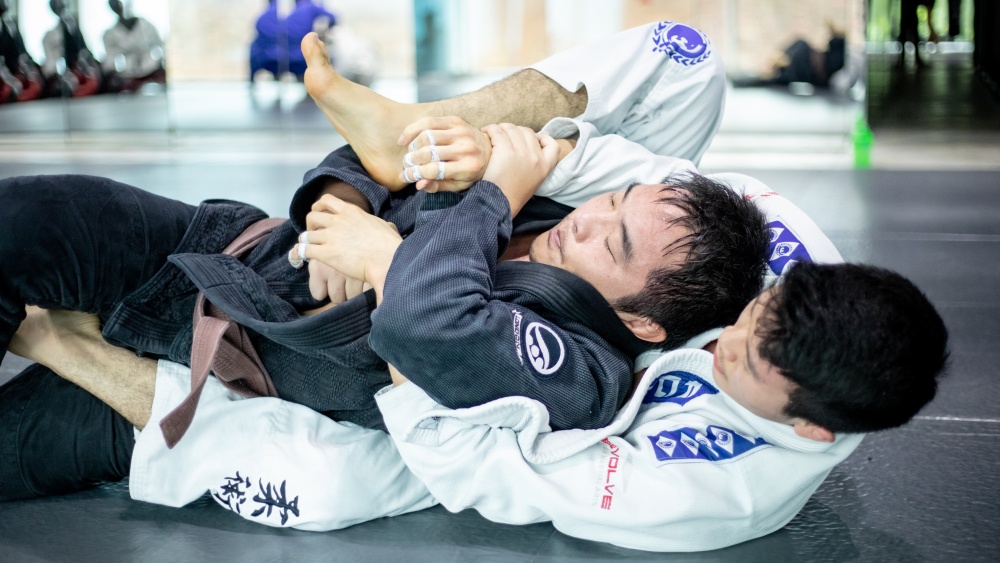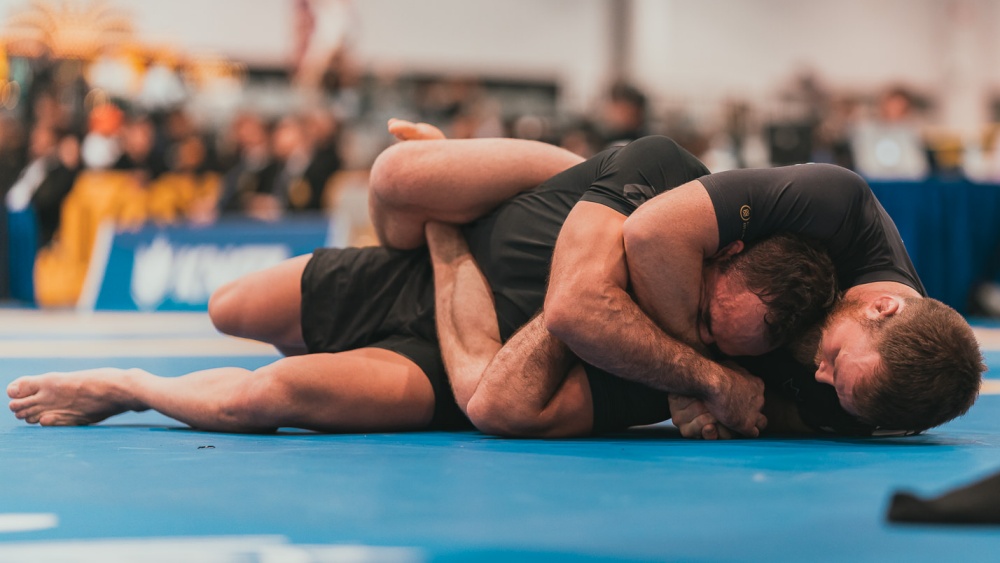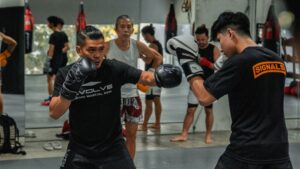The back mount is the most dominant position in Brazilian Jiu-Jitsu, and arguably according to some (including John Danaher), even in MMA. It is regarded as a powerful position because you control the opponent from the back, allowing you opportunities to finish the fight by way of chokes.
The back mount requires a good understanding of grips and body position. While it can take a while to fully master, it is undoubtedly a worthy investment! The back mount is a fantastic position to keep your opponents on the defensive. It is also a position that does not require any unique traits or physical attributes. This article will talk about the mechanics and common tactics from the back mount.
What Is The Back Mount In BJJ?
The back mount is where you control the opponent from the back. A key idea in using the back mount is to apply chest to back connection as you secure a seatbelt grip. Placing your feet on the opponent’s hips is the fundamental positioning taught to beginners.
Another alternative is to use a body triangle. This is the better option, especially if you have longer legs. Remember to not cross your feet when securing the back mount, as you might get leg locked. The back mount is very handy for sport grappling and mixed martial arts.
Taking the back in sport Jiu-Jitsu gives you points and opens up various attacking opportunities. In fact, two of the highest percentage submissions in gi BJJ, the rear naked choke and bow and arrow choke, start from the back mount.
How To Maintain The Back Mount
If you are a smaller grappler, you may find the back mount suitable for your game as it is a safe way to control stronger opponents. Getting behind the opponent is ideally the position smaller grapplers should go to, especially when fighting against someone larger than you. If you are a bigger person, don’t fret – the back mount is great for all body types as well.
Remember that taking the back is only half the work. Maintaining back control while nullifying the opponent’s escapes is another aspect of the position that you should master.
Tom Davey shows two ways to keep the back mount. Ideally, you should apply a seatbelt grip and maintain chest to back connection at the onset. The feet should also stay active by creating hooks near the hip or doing a body triangle to prevent movement. Using your legs to create attachments is super important. Still, we must again emphasize that chest-to-back connection is the back mount’s central focus.
Tom says that as long as you maintain chest-to-back connection using the seatbelt grip, it doesn’t matter if your legs are outside the opponent’s body. You will still be able to effectively control your opponent’s movement.
Supposing that your legs are not attached to the opponent’s body, get up to your knees, sit the opponent up while you stand, and step over your leg to the side of your upper seatbelt arm as you fall to that side. In the back mount, the hooks are only additional components and not a necessity.
The Straight Jacket
The straight jacket system is John Danaher’s approach to systematizing the back mount. In this video, Freddy Trillo, a Tom DeBlass black belt, demonstrates the intricacies of the technique.
As mentioned earlier, secure the back mount, maintain chest to back connection, and secure the seatbelt grip. Let’s discuss the seatbelt grip for a bit. The arm closest to the neck is called the strong side. The other arm is known as the weak side because it’s the side most grapplers turn to in their escapes.
Freddy refers to the weak side as the underhook side in the video. The underhook side is where you want to fall and bring your opponent while you block their hip with your bottom leg across their body. As in the previous video, you can place your hooks or apply a body triangle to strengthen your control.
As the opponent looks to break the seatbelt grip with their top hand, peel it off using your bottom seatbelt hand. Raise the opponent’s hand and post your elbow to the ground to prevent the opponent from putting their hand down.
The great thing about being on the underhook side is that it gives you the flexibility to move your top leg. You can use your leg to wrap the opponent’s top arm as you control it with your bottom seatbelt hand. Bring your top leg around the opponent’s top arm and hide it behind their body as you let go of the grip with your bottom hand.
One cool tip is to keep your top leg under when crossing your legs. Doing so prevents the opponent from taking their top hand out while your bottom leg goes over.
It is now relatively easy to get a two-on-one grip on the opponent’s bottom arm once you trap the top arm. Push the opponent’s bottom arm down to their stomach by grabbing it near the pinky area and not by the wrist.
Now that the opponent’s upper body is immobilized with both arms trapped, finish the straight jacket position by choking the opponent using your top hand. Flatten your hand while you slowly access the neck. Take note that this is the last step before the submission, so remain calm and slowly work on completing the choke.
Final Thoughts
It takes time to become efficient with the back mount. In a sport that starts with competitors facing each other, getting behind your opponent requires a lot of effort. You don’t need to have many weapons when you get the back. What’s important is you understand the control mechanics that prevent opportunities to escape. If you are new to BJJ, it is recommended that you include the back mount in your overall game. It gives you the ability to control people regardless of their size and strength.
You may also like:

















